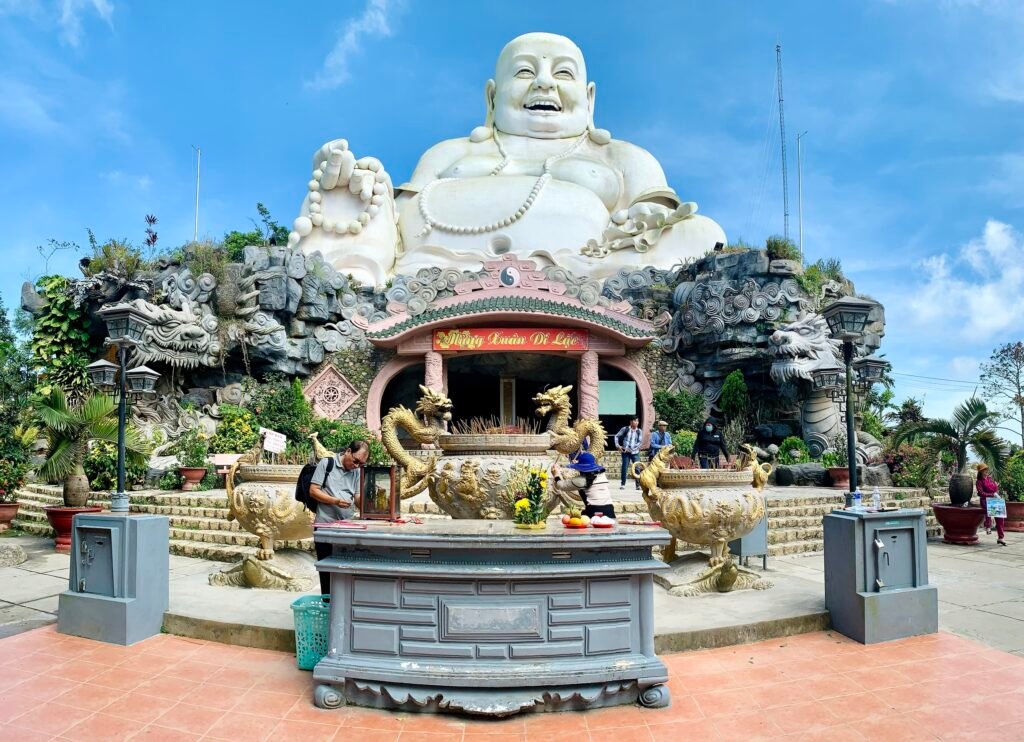Introduction:
Immerse yourself in a blend of history and modernity at the iconic Olympic Stadium in Phnom Penh, Cambodia. Located in the heart of the city, this impressive structure stands as a unique symbol of Cambodia’s rich past and dynamic present. The stadium, though initially conceived for the never-held 1963 Southeast Asian Peninsular Games, became a powerful symbol of the country’s modernization efforts in the post-colonial era. It is a must-see destination for anyone who wants to understand Cambodia’s complex history and its journey towards modernity.
Unveiling the History of Cambodia through the Olympic Stadium
The Olympic Stadium in Phnom Penh is not just a sports arena. It is a testament to Cambodia’s struggle to establish its identity in the post-colonial period. Constructed in 1964, under the guidance of the famous architect Vann Molyvann, the stadium represented Cambodia’s aspiration to become a modern nation-state. Molyvann, a student of the architectural principles of the New Khmer Architecture movement, incorporated traditional Khmer elements into the stadium’s design, making it a perfect fusion of the old and new.
However, the stadium’s history also reflects the darker chapters of Cambodia’s past. During the Khmer Rouge regime, when the city of Phnom Penh was almost completely abandoned, the stadium was used as a site for executions. One can hardly walk through the stadium today without a sense of the deep historical scars that this place bears. Yet, it’s also a place of resilience, where Cambodians come to exercise, socialize and simply enjoy life, turning a place of past horrors into a community gathering space.
How the Olympic Stadium Mirrors Cambodia’s Modern Evolution
Today, the Olympic Stadium is a bustling hub of activity, mirroring the vibrant energy of modern Cambodia. In the mornings, you can see locals jogging, practicing Tai Chi, or playing soccer, while the evenings are filled with group aerobic sessions, bringing together people of all ages. This lively atmosphere is a testament to Cambodia’s progress, a country that has come a long way from its tumultuous past and is now looking towards a bright future.
As Phnom Penh has expanded and modernized, the Olympic Stadium has been preserved as a green oasis in the heart of the city. The stadium’s design, a mix of modernist concrete architecture blended with traditional Khmer elements, has influenced many of the country’s contemporary buildings. As such, the stadium serves as a benchmark of the country’s urban development and is a testament to Cambodia’s modern architectural identity.
Description of the Attraction:
The Olympic Stadium is an architectural marvel showcasing the New Khmer Architecture movement’s principles. It features a unique design of sweeping curves and bold geometric shapes that echo the grandeur of Cambodia’s ancient temples. The complex includes a main stadium, an indoor sports hall, an Olympic-size swimming pool, and a volleyball court, all set within a lush landscape. Despite its traumatic past, the stadium today exudes a cheerful and lively atmosphere, echoing with the laughter of children playing and the chatter of friends meeting up for a workout session.
Things to Do:
Join the locals in their morning exercise routines, attend a football match or simply relax and soak in the vibrant atmosphere. If you are interested in architecture, take a leisurely walk around the stadium to appreciate its distinctive design and attention to detail. Don’t forget to capture some stunning photos against the backdrop of this historic monument.
Local Tips:
For the best experience, visit early in the morning or late in the afternoon when the weather is cooler. Dress comfortably and bring a water bottle to stay hydrated. It’s also important to remember the site’s historical significance and behave respectfully.
How to Get There:
The Olympic Stadium is centrally located in Phnom Penh and can be reached by tuk-tuk, taxi, or on foot if you’re staying nearby. It’s approximately a 15-minute drive from the Royal Palace.
Nearby Attractions:
While in the area, consider visiting the Tuol Sleng Genocide Museum or the bustling Russian Market, both of which are a short drive away.
Conclusion:
The Olympic Stadium in Phnom Penh is much more than a sports arena – it is a living monument that tells the story of Cambodia’s past and its journey to the present. It is a place where history, culture, and daily life intertwine, making it a must-visit for anyone seeking to understand the heartbeat of this fascinating country. Whether you’re an architecture enthusiast, a history buff, or simply a curious traveler, the stadium offers an unforgettable glimpse into Cambodia’s complex and resilient spirit.






